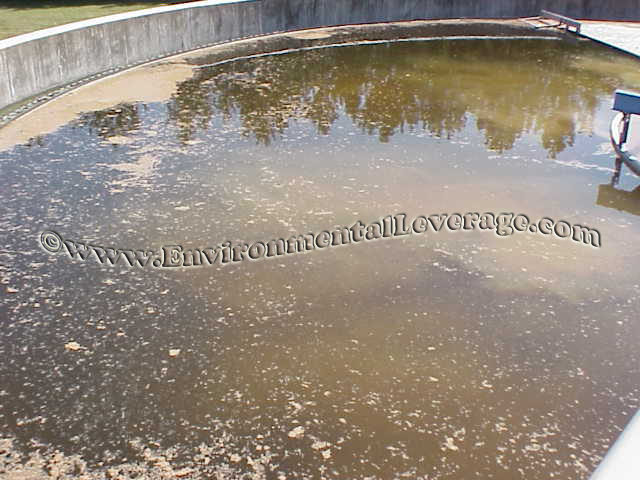Biological Products:
Bioaugmentation products for Wastewater applications in Papermills, Refineries, Chemical, Tanneries, Municipalities, Textiles, Steel, Agriculture, Animal feedlot, Gun Powder plant, Food and Beverage- Dairy Products, Orange Juice factory, Wineries, Cookie factory, Vegetable processing plant, Meat packing, Barbecue Restaurant, Aquaculture, Ornamental Ponds with algae , CAFO, Nursing homes, Military, Campgrounds, Universities, Regulatory agencies, River and Lake remediation
Training Materials:
Training is an integral part of any job. Not everyone is at the same level of training. Many people want beginning concepts and basics. Some need technical information or troubleshooting. Some want equipment, technology or process information. We have developed a full set of Basic training, Advanced training, Filamentous Identification the Easy Way as well as custom training CD's Manuals. We also provide hands-on training classes and soon will have an Online "E-University".
Audits and Consulting:
At Environmental Leverage® Inc., we have a team of experienced individuals who come into your plant with a fresh pair of eyes. The system is checked from influent to effluent. System optimization, equipment efficiency and operational excellence are key components explored. Key Benefits Equipment efficiency Total Cost of Operation reductions Reliability and safety An onsite audit is conducted to examine system parameters, process controls, and current monitor and control procedures. A physical walk-through is conducted, process flow diagrams are examined, previous design criteria are examined and current standard operating procedures are evaluated along with data logs.
|
Industry Troubleshooting-DenitrificationLatest News!
What's New!
We have just added "Virtual Audits" to our capabilities. Check out our new Services. We are in the process of developing new courses for our ""Online E-University" in order to meet the needs of our global customers that cannot travel to our public classes.Visit our new website www.WastewaterElearning.com/Elearning
The question often arises as to why bubbles occasionally form in a secondary (or primary) clarifier, eventually bringing up clumps of sludge to the surface or as to why H2S forms in the sludge going to a dewatering unit, etc. The answer is that the gasses are caused by a phenomena known as gasification, i.e.; the transformation of a soluble or suspended organic material into gas during anoxic waste decomposition.
This situation is caused by a lack of sufficient dissolved oxygen in the system, resulting in facultative bacteria (heterotrophic bacteria) using alternative chemical sources for the oxygen demand required to sustain metabolism of their carbon based food sources.
First: Metabolism is the biochemical process (a series of biochemical
oxidation-reduction reactions) performed by living organisms to yield energy
for synthesis, motility and respiration. All non photosynthetic
microorganisms (microorganisms that do not fix sunlight as their source of
energy, i.e.; don’t contain chlorophyll and, therefore, can’t utilize
photosynthesis) are dependent on their ability to obtain energy from the
metabolism of a substrate. Heterotroph’s use carbon molecules as their
substrate, autotroph’s use an inorganic molecule as their substrate.
NH4+ + 1½ O2 . nitrosomonas bacteria .® NO2- + 2H+ + H2O + energy NO2- + ½ O2 . nitrobacter bacteria .® NO3- + energy Heterotrophic bacteria utilize carbon molecules as an energy source; 2CH3OH + 3O2 ¾ ¾ ® 2CO2 + 4H2O (methanol)
The higher the ultimate hydrogen acceptor is on the energy scale, the greater the preferential use of that acceptor over alternative hydrogen acceptors (and the higher the energy yield). Strict anaerobic reactions have the lowest energy yield, and therefore, have the lowest priority in this reaction and take longer to achieve.
A Reduction reaction involves the removal of oxygen from the substrate or the addition of hydrogen or electrons). Therefore, gasification (or denitrification) occurs when a system becomes depleted in dissolved oxygen and heterotrophic (carbon degrading) bacteria utilize an alternative oxygen source (hydrogen acceptor) to support their oxidation reaction metabolism. This is called an anoxic reaction.
Confused? Just remember that in an anoxic reaction, the goal of the bacteria is to use the oxygen in the molecules in support of their oxidation reactions for metabolism of an organic compound - they are not sulfur reducers or some special microbe. The sequential order of oxygen utilization as a hydrogen acceptor is as follows;
In order by decreasing energy yield: Aerobic AH2* + O2· ¾ ¾ ® CO2 + H2O + energy
AH2 + NO3- ¾ ¾ ® N2 + H2O + energy ¯ facultative AH2 + SO42- ¾ ¾ ® H2S + H2O + energy
AH2 + CO2 ¾ ¾ ® CH4 + H2O + energy ¯ Anaerobic AH2 + B** ¾ ¾ ® BH2*** + A + energy
· dissolved oxygen * energy stored in organic matter ** an oxidized organic compound *** a reduced organic compound
So, what does this mean to my plant? Allowing gassification to occur in your plant can cause you to violate on TSS permits, increase your demand for polymers on a clarifier or even float your entire bed or sludge blanket over the weirs eventually. In sludge dewatering areas, an increase in H2S gas can cause serious health problems.
For more info- click on links below:
Total Nitrogen Balance Newsletter
|



